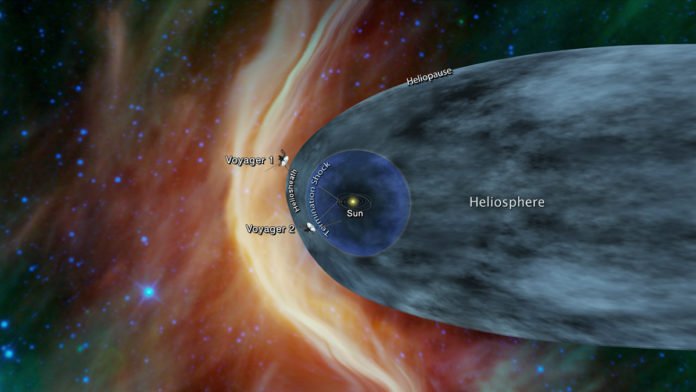NASA‘s Voyager 2 probe, which is traveling through the outermost layer of the heliosphere, has detected an increase in cosmic rays that originate outside our solar system.
In August, scientists observed that the instrument in Voyager 2, named Cosmic Ray Subsystem had observed 5% increment in cosmic rays hitting the spacecraft. The probe’s Low-Energy Charged Particle instrument has distinguished a comparative increment in higher-energy cosmic rays. Mission organizers expect that Voyager 2 will quantify an expansion in the rate of cosmic rays as it methodologies and crosses the limit of the heliosphere.
In May 2012, Voyager 1 experienced an increase in the rate of cosmic rays similar to what Voyager 2 is now detecting. That was about three months before Voyager 1 crossed the heliopause and entered interstellar space.
Though, Scientists noted that this increment is not a definitive sign that the probe is about to cross the heliopause. Voyager 2 is in a different location in the heliosheath — the outer region of the heliosphere — than Voyager 1 had been, and possible differences in these locations mean Voyager 2 may experience a different exit timeline than Voyager 1.
Voyager Project Scientist Ed Stone said, “We’re seeing a change in the environment around Voyager 2, there’s no doubt about that. We’re going to learn a lot in the coming months, but we still don’t know when we’ll reach the heliopause. We’re not there yet — that’s one thing I can say with confidence.”
